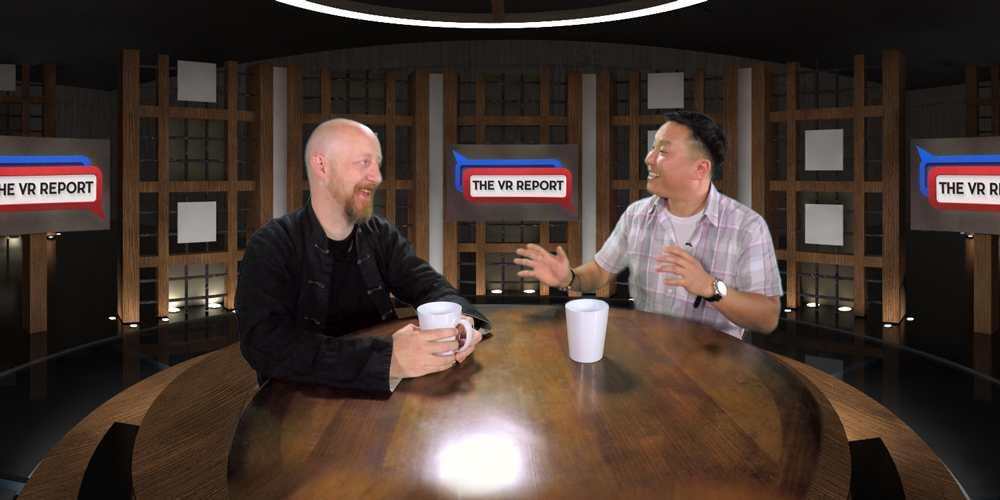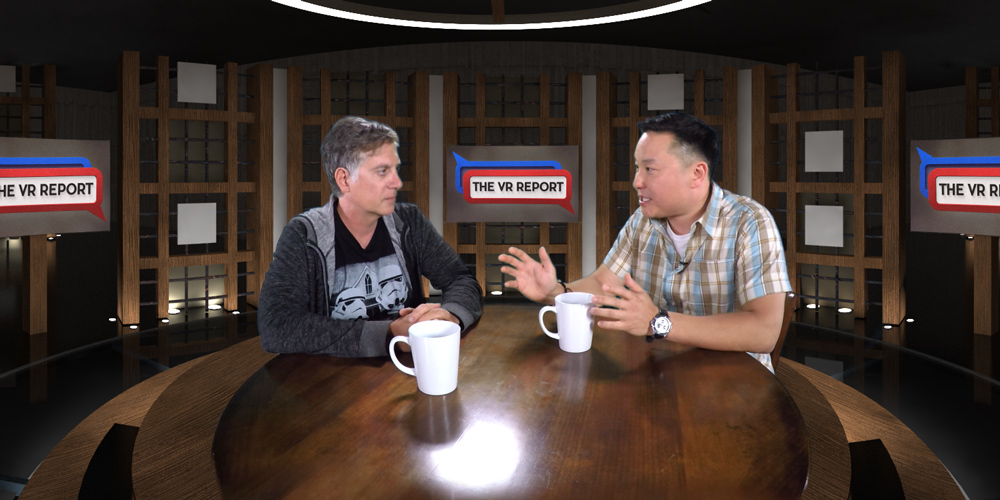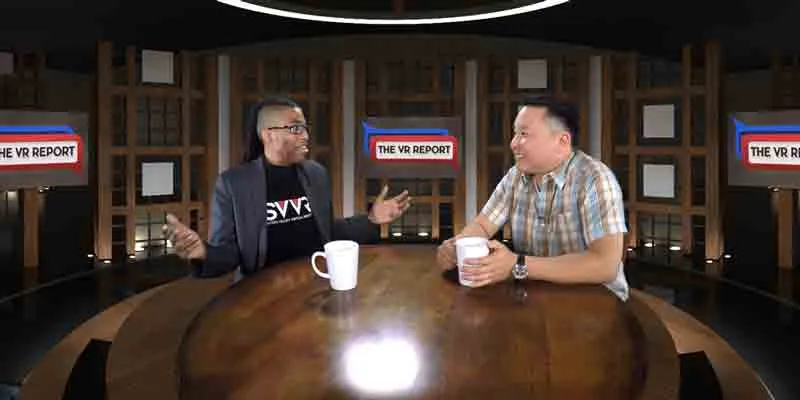“We’re talking about VR, in VR, with VR people, with a host who works in VR. It’s all very meta.”
The VR Report is quite meta indeed. A weekly show on Samsung’s MilkVR platform, The VR Report brings a number of prominent individuals within the community together for one on one interviews in VR with the show’s host David Oh, who works in virtual reality himself.
When Oh started The VR Report with Lex Halaby, and Kevin Ping Chang, they knew they wanted it to be different. “We wanted to go beyond the press release and find out what makes these amazing people tick,” he says. “In several years, all the major corporations will be involved in virtual reality in some way or another, and many of these early pioneers will be forgotten. We felt virtual reality is a perfect time capsule to capture these voices.”
The episodes, which are about ten minutes long each, focus on a variety of topics within the industry. The conversations are relatively unstructured, allowing for Oh’s charismatic personality to drive very conversational interviews with his guests. This style is inherently important to the show, as it allows the user to more easily sink into the idea they are there at the table with Oh and the guest, silently observing the conversation.

I sat down with David Oh to chat more about the program, why he and his team think that it is an important endeavor, and how it will continue to evolve over time.
Why do you feel this project is important?
We want to capture the multitude of voices in all areas of VR while the medium is still in it’s infancy. It’s an exciting time, with different technology breakthroughs happening almost daily, but we didn’t want to lose sight of the people behind those breakthroughs. We feel it’s important to share their stories and what inspires them to continue pushing the boundaries of what’s possible.
Was there any inspiration for the show?
We, the creators of the show, all come from very different backgrounds but share a passion for VR. We wanted to get to know the people behind the amazing technology breakthroughs and VR experiences we were all sharing. We wanted to go beyond the press release and find out what makes these amazing people tick. In several years, all the major corporations will be involved in virtual reality in some way or another, and many of these early pioneers will be forgotten. We felt virtual reality is a perfect time capsule to capture these voices.

Who is your audience, is it for enthusiasts or will someone who is new to VR get something out of the show?
The show speaks to anyone with an interest in VR. So many people try VR for the first time and their minds are blown. They want to experience more, but also learn about what’s coming in the days, months, and years ahead. The VR Report gives them a window into the movers and shakers of the industry in a fun and candid conversational format. It isn’t as focused on the technology, as the people behind the technology and how the technology will shape our lives going forward.
So what is the benefit of watching this in VR as opposed to watching it in “2D”? What does VR bring to this? (Beyond being meta and providing more immersion)
Many of the early VR experiences we’re seeing focus on the visceral. For example riding a roller coaster or getting attacked by sharks. There’s absolutely a place for those experiences but we wanted to step away from the visceral and explore the cerebral. Being at the table in VR for these insightful conversations makes them more intimate and therefore more impactful. You aren’t faced with banner ads and clickbait thumbnails surrounding the video you’re watching. You’re not scrolling through comments or multitasking while watching. You are there. The connection stronger and you come away from it with a true bodysense memory of the experience and the topics discussed.
What are the next steps for The VR Report? What does the future hold?
So with season one, all we wanted to focus on is how to capture the best experience in being part of a conversation in VR and we believe we did that. People actually feel they are on a set with others having a discussion about VR when experiencing The VR Report. Lex did a great job of making it feel and look better than any VR video out today. For season two we’re experimenting with how to make it more interactive. We want viewers to be able to stop the interview and be able to interact with the virtual screens within the set. You may have noticed noticed there are virtual screens that play videos and display images relative to what the guests are talking about. We want viewers to be able to interact with those screens to get more information about what those guests are talking about. You can only do this on VR and some of our early tests are very immersive. But this is later down the road so we don’t want to discuss too much about it until it’s ready.
Disclosures: David Oh is a personal friend of the author and one of his first guests, Tony Parisi, is an advisor and friend to UploadVR.

























